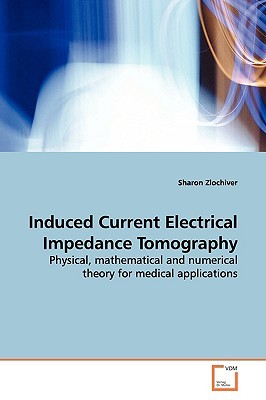
- We will send in 10–14 business days.
- Author: Sharon Zlochiver
- Publisher: VDM Verlag
- ISBN-10: 363914435X
- ISBN-13: 9783639144352
- Format: 15.2 x 22.9 x 1.2 cm, softcover
- Language: English
- SAVE -10% with code: EXTRA
Reviews
Description
In Electrical Impedance Tomography (EIT), the electrical properties of the various tissue types form the basis for monitoring or imaging physiological and pathological processes. The technique requires the applying of small magnitude electrical current into the object under investigation, measurement of the developing potentials on the surface, and solving the mathematically ill-posed, non-linear inverse problem, relating the measurements to the electrical properties of interest. This book describes the induced-current EIT (ICEIT) approach, in which current is applied into the object by magnetic induction using excitation coils rather than by direct injection via surface electrodes as in conventional EIT. The physical and mathematical models of ICEIT are established and numerical approaches to solve the forward and inverse problems are detailed. The technique's applicability to several medical applications, including thoracic imaging, monitoring cryosurgery procedure in the brain and monitoring lung fluid volume, is discussed.
EXTRA 10 % discount with code: EXTRA
The promotion ends in 16d.02:36:10
The discount code is valid when purchasing from 10 €. Discounts do not stack.
- Author: Sharon Zlochiver
- Publisher: VDM Verlag
- ISBN-10: 363914435X
- ISBN-13: 9783639144352
- Format: 15.2 x 22.9 x 1.2 cm, softcover
- Language: English English
In Electrical Impedance Tomography (EIT), the electrical properties of the various tissue types form the basis for monitoring or imaging physiological and pathological processes. The technique requires the applying of small magnitude electrical current into the object under investigation, measurement of the developing potentials on the surface, and solving the mathematically ill-posed, non-linear inverse problem, relating the measurements to the electrical properties of interest. This book describes the induced-current EIT (ICEIT) approach, in which current is applied into the object by magnetic induction using excitation coils rather than by direct injection via surface electrodes as in conventional EIT. The physical and mathematical models of ICEIT are established and numerical approaches to solve the forward and inverse problems are detailed. The technique's applicability to several medical applications, including thoracic imaging, monitoring cryosurgery procedure in the brain and monitoring lung fluid volume, is discussed.


Reviews